The just concluded military strike in Syria is perhaps one of rare bombardments where both attacker and defender came out celebrating. Both sides claim victory, and it’s not hard to understand why. In spite of raining more than 100 smart cruise missiles, initial report said only three people were injured. No one was killed, making this one of the most “peaceful” missile strikes in the history.
The first person celebrating the so-called victory was none other than U.S. President Donald Trump. He said in a Twitter post – “A perfectly executed strike last night. Thank you to France and the United Kingdom for their wisdom and the power of their fine Military. Could not have had a better result. Mission Accomplished!”
Then hundreds of delightful Syrians emerged. They took to the street and gathered at landmark Omayyad squares in the Syrian capital – honking their car horns, clapping their hands and dancing, flashing victory signs and waving Syrian, Russian and Iranian flags in scenes of defiance. Mahmoud Ibrahim said – “We are not scared of America’s missiles. We humiliated their missiles.”

The Russian Defence Ministry has claimed that most of the missiles launched by the US, UK and France had been intercepted by Syria’s air defences. Adding salt to injury, Kremlin said Trump’s trumpeted “new and smart” cruise missiles were defeated by ancient Russian equipments, including S-125, S-200 as well as BUK, Kvadrat and Osa defence system.
Those Russian dinosaurs, made more than 30 years ago in the late 1960s, had allegedly succeeded in intercepting 71 out of 103 missiles fired by the Americans, British and French military machines. That’s about 70% success rate, not bad for some obsolete system which the Russia doesn’t use anymore. The United States, of course, has rubbished Kremlin’s claims.
The Pentagon claimed that the U.S.-led airstrikes on Syria “successfully hit every target,” and described them as “precise, overwhelming and effective.” Lt. Gen. Kenneth McKenzie, the director of the Joint Staff at the Pentagon, said that 105 weapons were launched against three targets in Syria. In fact, the U.S. Department of Defence has its own version of story about Syrian’s retaliation.
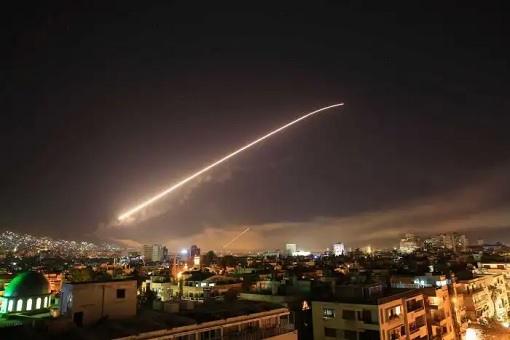
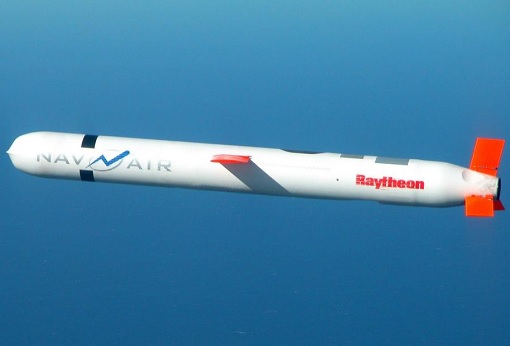
The U.S. claimed that Syria had actually launched 40 surface-to-air missiles in an attempt to shoot the allied weapons down, but that most of them had been fired after the last Syrian target had already been destroyed. The U.S. also mocked and lectured Assad regime, saying such a reckless action of firing the missiles blindly would endanger its own people.
McKenzie said – “When you shoot iron into the air without guidance, it’s going to come down somewhere.” Amazingly, none of those 40 missiles injured or killed anyone so far. Does this mean there are some truths behind Russian’s claim that their Cold War era defence system had indeed humiliated the sophisticated and smart cruise missiles from America?
The U.S.-led coalition target list included:
- Damascus International Airport: 4 missiles launched – all were intercepted
- Al-Dumayr Military Airport: 12 missiles launched – all were intercepted
- Bley Military Airport: 18 missiles launched – all were intercepted
- Shayarat Military Airport: 12 missiles launched – all were intercepted
- Mezzeh Military Airport: 9 missiles launched – 5 were intercepted
- Homs Military Airport: 16 missiles launched – 13 were intercepted
- Barzah and Jaramani: 30 missiles launched – 7 were intercepted
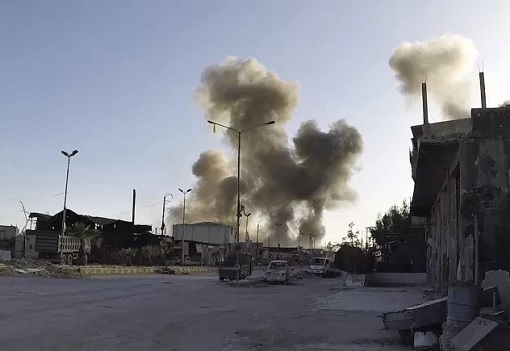
Clearly, there were more than 3 targets being attacked by the American, British and French military forces. CNBC earlier said President Trump was considering 8 possible targets. But speaking alongside Mattis, Chairman of the Joint Chiefs of Staff Gen. Joseph Dunford named only 3 targets that were struck in the military operation.
Therefore, the burning question is – did Pentagon reveal only 3 targets to the public after the mission was over in order to hide the embarrassing fact that some outdated Russian defence systems have had destroyed U.S. incoming missiles? After all, wasn’t it overkill to send more than 100 smart cruise missiles to only 3 targets, averaging more than 30 missiles for each target?
The Russian Defence Ministry also claimed that while the facilities in the areas of Barzah and Jaramani were partly destroyed, despite 30 missiles launched by the U.S.-led coalition, those facilities had been abandoned for a long time. However, the Pentagon said the Barzah facility was hit by a mind-boggling 76 U.S. missiles in total.
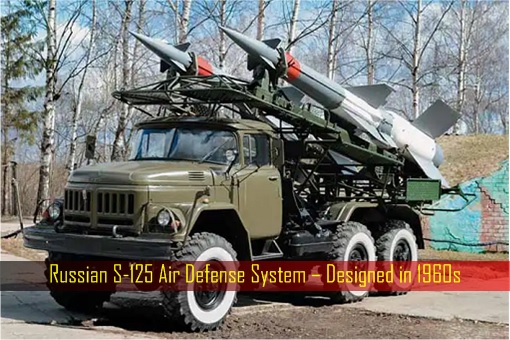
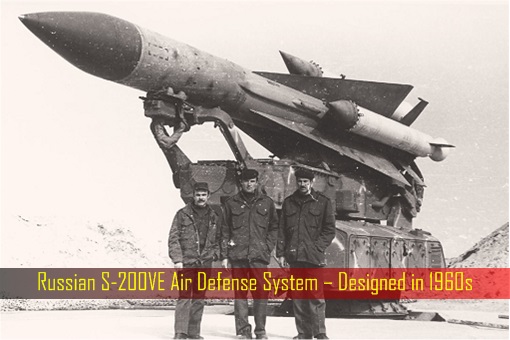
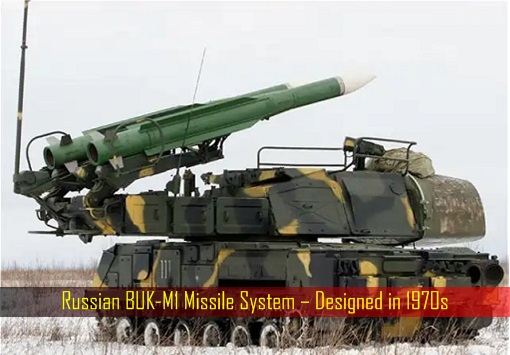
According to the U.S. version, a total of 105 missiles were unleashed. Britain launched 8 Storm Shadow cruise missiles from the sky, while France fired 12 cruise missiles – 3 from a frigate and 9 from aircraft. The remaining 85 missiles were unleashed by the United States. In total, the US launched 66 Tomahawk missiles, and 19 joint air-to-surface stand-off missiles.
But what about the fearsome S-400 missile defence system? Interestingly, the Russian decided not to use its air defences to repel the missile strikes. That’s because none of the cruise missiles launched by the U.S. and its allies entered the zone of responsibility of the Russian defences, namely Hmeymim airbase and Tartus naval facility, according to Russia.
Of course, the explanation offered by the Russian Defence Ministry doesn’t quite make sense as the coverage of S-400 defence system is wider than Hmeymim and Tartus. Either the Russian’s S-400 sucks or Moscow deliberately refused to show off. In reality, the U.S. deliberately fired an overwhelming number of Tomahawks to provoke Russia, hoping to test the real capability of the S-400.
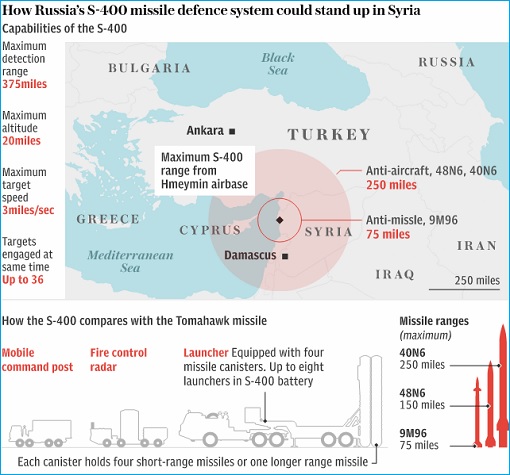
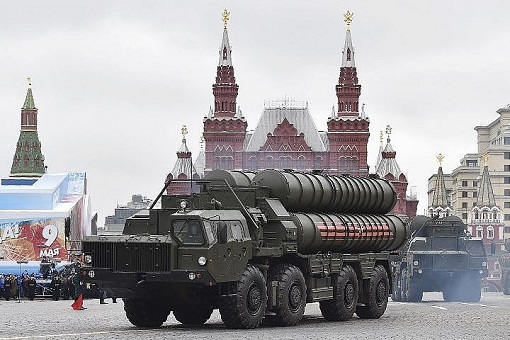
But this strike was a joke from the beginning. Russia was given tips of the targets. It would be really dumb to engage the U.S. and its allies’ and in the process exposes whatever weakness the Russian defence system has. Hence, if the S-400 was shown to be incapable of stopping significant numbers of Tomahawks it would have implications for Russia’s deterrence capability.
Nothing is more terrifying than not knowing the real ability of Russian S-400. More importantly, like the U.S., the Russia wanted to use this opportunity to promote and sell its military hardware. Syria has 48 Soviet-built S-200 Angara missiles which were built back in 1967. On Saturday morning, the Kremlin revealed it was considering supplying the updated S-300 missile systems to Syria.
So, did the Russian ancient defence system manage to humiliate the U.S.-led forces? Chances are the US-UK-France alliance didn’t hit 100% of its targets. Each Tomahawk cruise missile possesses 450-kg of explosive firepower. If the 66 Tomahawk missiles used in the strike is divided equally among the 3 targets, that’s 9,900-kg of explosive for each target.
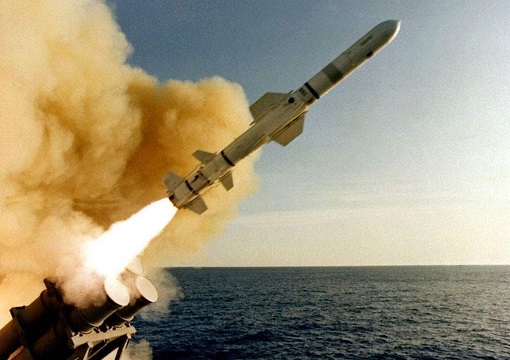
And we haven’t talked about the rest of different missiles. It’s laughable that 35 cruise missiles (average of 105 missiles for 3 target sites) could only do so little damage to each of the 3 target sites. The best part is, all the cruise missiles hitting the so-called chemical storage facility didn’t expose the deadly gas and kill any of the civilians.
Other Articles That May Interest You …
- Trump Strikes Syria Again – Humiliated Putin Has Egg On His Face, No Action Talk Only
- US-Led Coalition Is About To Strike Syria, And Putin Risks Losing Face If He Doesn’t Retaliate
- The Hidden Message – Here’s Why Russia Tests Its Invincible “Satan 2” Missile … Again
- Here’s Why UK Chemical Attack Could Have Been Staged To Blame Russia
- If US Strikes Syria Again, Russia And Iran Will Hit Back
- Here’s Why Tomahawk Strikes In Syria Is Just A Smokescreen
- American Aggression – The Hidden Reasons Why 59 Tomahawk Strikes Syria
- Panic!! Russia’s Aircraft Carrier Leading A Fleet Of Warships Towards Mediterranean
- Here Are Russia’s 3 Awesome Weapons Which The U.S. Is Absolutely Terrified Of

|
|
April 16th, 2018 by financetwitter
|


|

|

|

|

|

|




























Comments
Add your comment now.
Leave a Reply